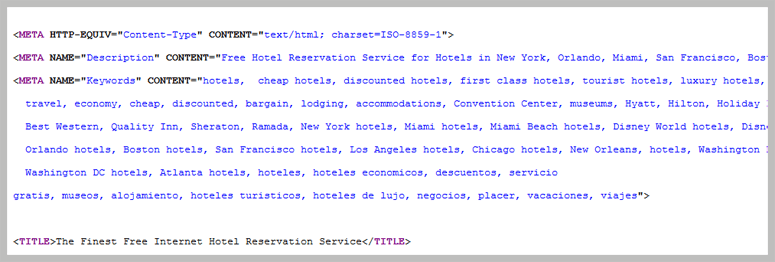
Keyword Stuffing refers to the excessive or unnatural use of targeted keywords within a webpage, with the intention of manipulating search engine rankings in a shorter time frame. This practice is considered a Black Hat SEO technique and is strictly discouraged by Google and other search engines.
Overusing keywords not only creates a poor user experience but also poses a serious risk of Google penalties, which can result in:
- A significant drop in rankings, or
- In extreme cases, complete de-indexing of the website from search engines.
Why is Keyword Stuffing Harmful?
Keyword stuffing is treated as spam by search engines. Since Google alone holds nearly 85% of the global search engine market share, any website practising keyword stuffing faces the risk of severe penalties. Instead of improving rankings, it can damage the website’s credibility and long-term visibility.
Widely Used Web Page Areas for Keywords Stuffing in SEO
Keyword Stuffing in SEO is truly considered spam, and many search engines — especially Google, which holds nearly 85% of the global search engine market share — can penalise a website if keyword stuffing practices are found on any of its pages.
There are multiple areas on a webpage where keyword stuffing can occur. However, it is always advisable to avoid such practices. If you notice that your website pages contain keyword stuffing, it is best to resolve the issue as soon as possible (ASAP) to prevent penalties and ranking drops.
- Keywords Stuffing through Meta Tags (Page Titles, Meta Description, Meta Keywords, OG Tags)
There are multiple areas in a web page to perform Keyword Stuffing, but it is always advisable to avoid doing it and if you see your website is having keywords stuffing on pages then better you resolve it ASAP.

- Keywords Stuffing through Web Page Content
The ideal keywords density of any keywords on a web page should be 1-2% for a 500 words content. But, with keywords stuffing this density percentage can get up to 7-8%.

- Keywords Stuffing through Heading Tags (H1, H2, H3, H4, H5)

- Keywords Stuffing through Image Alt and Title Tags

- Keywords Stuffing through Internal Linking Alt and Title Tags
Nowadays, search engines prioritise content that is unique, comprehensive, relevant, and genuinely helpful, as these qualities collectively determine content quality. This shift has rendered keyword stuffing practically useless.
However, despite being an outdated and risky practice, many webmasters and SEO spammers still resort to keyword stuffing in an attempt to rank their pages faster. They do so fully aware that if caught, the consequences can be severe and devastating, often leading to penalties or even de-indexing.


0 Comments